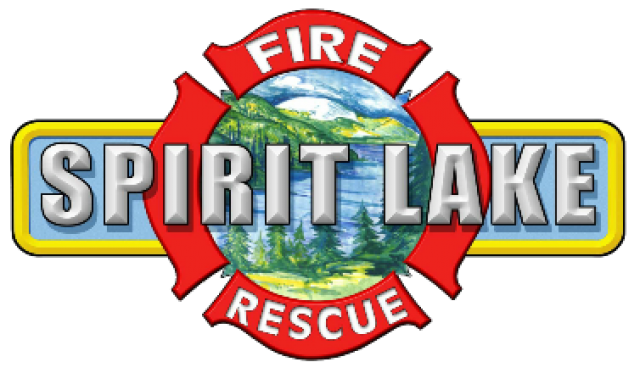
Frequently Asked Questions
FAQs
How do I obtain a fire or medical report?
If you have had a fire or medical emergency, you may need a report for insurance purposes. For a copy of a fire incident report, please complete this form and email it to admin@spiritlakefire.com.
For a copy of a medical report/record and patient care records, please contact Kootenai County Emergency Services System (KCEMSS) at (208) 930-4224 or info@kcemss.org.
Can I burn and/or have a bonfire in my yard?
Open burning is always prohibited in the city of Spirit Lake. A small recreational warming fire is allowed as long as it does not produce offensive smoke or odor emissions, is contained inside an approved structure, and is not within 25 feet of a structure. Fires must be attended at all times and must be fully extinguished before you leave the site.
Burning outside of city limits, burning of logging slash piles, and/or field burning must meet Idaho Department of Lands (IDL) guidelines and requires a burn permit from May 10 through October 20.
Please always follow the Spirit Lake Fire Protection District Burning Regulations.
Can I tour the fire station?
Of course! It is an opportunity for us to teach children (and adults) about fire safety. Please call (208) 623-5800 to schedule a tour, specifying the following:
Date and time of request
Number of people in the group
Age of participants
Contact person’s name and phone number
Please be mindful that our first priority is emergency response and disruptions and/or cancellations may occur.
Can I get my fire extinguisher serviced at the fire station?
Unfortunately, the Spirit Lake Fire Protection District does not service fire extinguishers. You will need to find a company which services fire extinguishers.
Can I get my blood pressure taken at the fire station?
Yes! Stop by Station 1 at 32168 N 6th Avenue in Spirit Lake, preferably between 8 a.m. and 4 p.m., and we will be happy to take your blood pressure. For more information, please contact us at (208) 623-5800.
Do firefighters rescue cats from trees?
It depends on the situation. We will evaluate the situation and assess the risk to our firefighting personnel. Oftentimes, a rescue is not required. With cats in trees, we recommend placing an open can of tuna at the base of the tree, leaving the immediate area, and waiting for the cat to get down on its own.
How do I get my child’s car seat inspected?
You may call us at (208) 623-5800 and schedule an appointment, though we do not have a certified technician on our staff.
Why do fire engines respond for emergency medical calls?
For faster advanced medical care. All of Spirit Lake Fire’s firefighters are cross-trained as EMTs; and we carry much of the same medical equipment on our fire apparatus as the ambulances. For serious medical calls, the patient will benefit from having the closest available unit respond to initiate care; and having the additional personnel to assist with care and preparation for transport saves even more time.
What should I do when an emergency vehicle is approaching displaying emergency lights and sirens?
Calmly pull to the right shoulder or curb, and stop when safe to do so.
What do firefighters do when they are not running fire or EMS calls?
Spirit Lake firefighters maintain 20 hours of training per month as a minimum standard. All firefighters are at least EMT-Basic certified, these Emergency Medical Services certifications have additional continuing education requirements. They also conduct “company-level” commercial fire prevention inspections, check and maintain equipment and apparatus, teach fire safety to schools, test hydrants, study, maintain physical condition, conduct station tours, supervise fire drills, and document all fire and EMS calls. Due to shifts of 48 hours, firefighters also shop, pay for, and prepare all their own meals and complete normal household chores around the station.
Why do I see fire trucks or ambulances parked outside of grocery stores?
Firefighters work a unique schedule consisting of 48-hour shifts with no allotted meal breaks. They combine their own money to supply food for the shift. They do not have the freedom to go anywhere alone, as crew integrity must be maintained to allow the most effective service at the time of an emergency. Firefighters are often out of their stations for long hours running emergency calls, training, conducting fire inspections, testing hydrants, and fulfilling public education requests. They remain available for calls by portable radio and will respond regardless of location or non-emergent status anytime they are outside of the station. Also, this is a great time for the community to say “hi,” ask questions of the firefighters, or view the fire apparatus.
Can I ride along on a fire truck or ambulance?
Riders are usually limited to Fire and EMT students. However, we do accept riders on a space-available basis at the discretion of the Duty Officer. All riders may be subject to a background check and will be observers only. For more information, contact us at (208) 623-5800.
